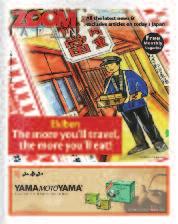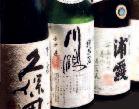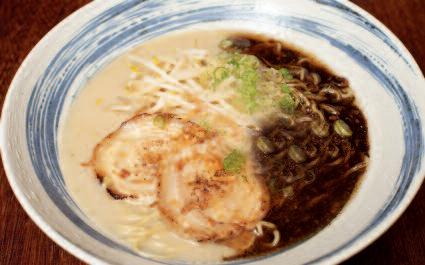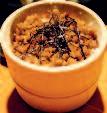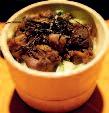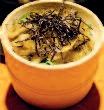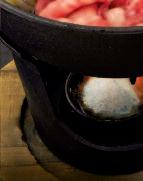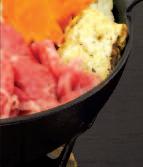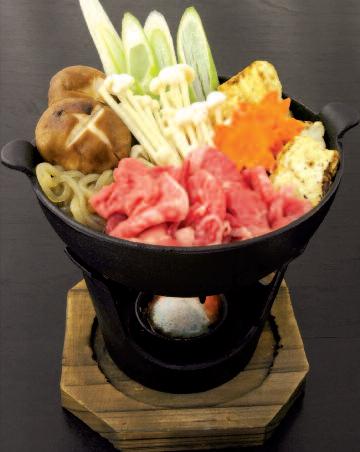










































































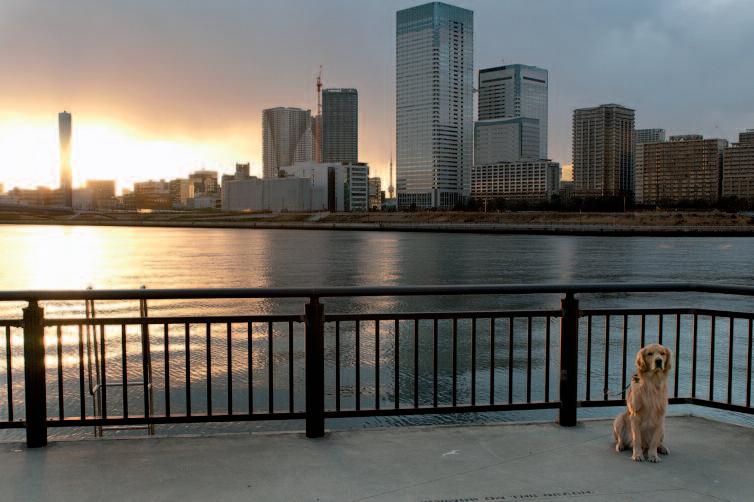
After an order for thirty-one A350s by Japan Airlines, the European aircraft manufacturer Airbus is feeling exhilarated. During a forum in Tokyo, Airbus’ CEO Fabrice Brégier declared that he is planning to expand further into the market largely dominated by Boeing “Our market share is 13% at the moment. It will be 25% by 2020,” he said.
Cover : Jérémie Souteyrat for Zoom Japan
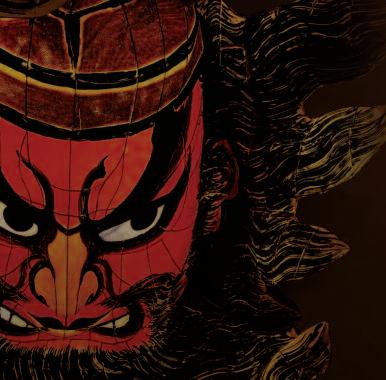


On the 1st of October Prime Minister Abe Shinzo announced an increase in VAT from 5% to 8%, starting on the 1st of April 2014. This will be the first since 1997 and aims to reduce the country’s enormous debt, amounting to 245% of the gross national product, while financing the social security system that has been under pressure due to the rapidly ageing population.















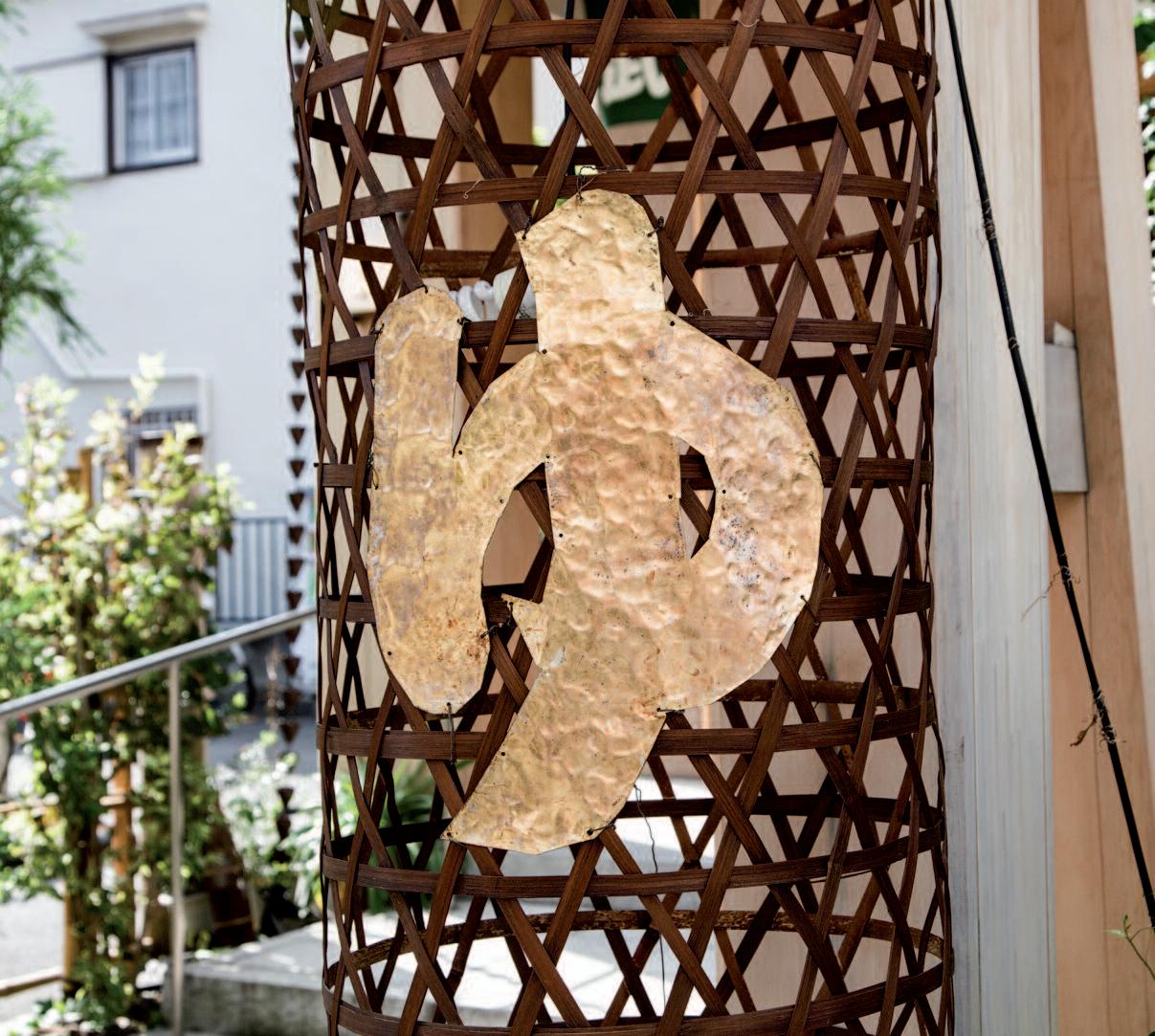
Washing and relaxing in very hot water is a ritual deeply embedded in Japanese life.
It ’ s time to scrub each other’s backs Whether CEO, beggar, monk or yakuza, elderly or young, everyone is equal in the bath – just bodies asking to be washed There is no difference between us when naked Everyone feels the other’s soul Everyone takes care with the other
It’s not about schooling or laws. School is for knowledge only It doesn’t teach us about life Law is for common sense It doesn’t teach us about life That is why the bath is the best place to learn about life It is the best place to go for this in Japan.”. So sings a customer in a public bath (sento) in Sugimori Hidenori’s film Mizu no onna (2002) that takes place in these traditional Japanese institutions Bathing is deeply rooted in daily
The term sento first appeared in 1401.
life in Japan. The origins of the bathing culture are still unclear, but we know it to be very ancient because “The History of the Kingdom of Wei”, a Chinese text dating back to 297 AD, includes a description of the Japanese bathing ritual that was probably imported from China and related to religion Bathing was a way of purifying after having been in contact with death. In later documents there are many references to bathing as well as archeological traces of
bathhouses and their paraphernalia. Iwaburo (stone bath) and kamaburo (cauldron) are two of the most ancient kinds of bath identified in the archipelago but were more like steam baths than those used nowadays. The first ones were introduced during the 11th century and the word sento was first used in 1401. It is the combination of two Chinese characters that mean “ money ” (sen) and “hot water ” (to, also pronounced as yu) Sento is the most common word to designate this type of bath house that multiplied during the 16th century The rapid urbanisation of the archipelago, its consequences on public hygiene and the strict fire regulations contributed to the development of public baths under the control of local authorities.
The inauguration of the first public bath took place in Edo in 1591.
The first sento was built in 1591 in Edo, later to become Tokyo. At that time, the baths familiar to people today were yet to emerge and the early sento featured facilities called todanaburo - bathing cabins - in which there was a bath heated from the ground Later the sliding doors through which the heat escaped were replaced and zakuroguchi were created in order to keep the water warm Zakuroguchi is a space in which heat is captured by wooden planks at the entrance to the bath, so that the customers need to bend over to get in This solution insured the bath’s temperature was regulated but was inconvenient because it blocked out the light completely and hid some bad surprises, such as waste or floating dead bodies. It was only during the 19th century that this system was abandoned for buildings that were better lit and equipped with better drains, giving birth to the sento we are still familiar with today
Regular bath houses are made up of three distinct zones (the changing room and toilet, the washing room and the bath) and they progressively became convivial neighborhood hubs in which Japanese would meet their neighbours, friends, or work colleagues to share a rare moment of intimacy. In certain agricultural regions neighbours would share a bath during which they would determine when the harvesting should be done However, the popularity of public baths have declined since the sixties, with the development of individual bathrooms in apartments. Bathing is still an important part of the day but it doesn’t have the same social role anymore Over the past two decades in Japan there has been a rise in tourists visiting spas (particularly those with hot springs), which gives everyone the opportunity to experience the atmosphere that used to fill neighborhood sento across the land Even so, it is lamented in Mizu no onna that, “the disappearance of public baths signifies the disappearance of the spirit of chivalry It also means less compassion for others And without compassion, there is no public bath”. This decline of the sento represents a real upheaval that mirrors the profound changes in Japanese society since the Second World War ODAIRA NAMIHEI
There is a list of words the sento user needs to know in order to take full advantage of the place.
For decades before cities were taken over by tall buildings, the sento chimney was an urban point of reference. This is not the case anymore today, but it is important to know that during the Second World W
height of chimneys in the capital to no more than 23 metres The regulation height has been reduced now, due to the use of fuel to heat the water. In Osaka, a local decree forced the property owners to paint a white line at the top of their chimneys to distinguish them from those of factories
Gesokubako – the shoe locker
In most of Tokyo’s bathing establishments you will find this locker at the entrance to put your shoes in before entering the changing rooms Most of the time it locks with a wooden key on which the locker’s number is carved.
Bandai – the counter
This is where you pay at the entrance In Tokyo it costs 450 yen for adults over 12 years old, 180 yen for children between 6 and 11 years old and 80 yen for children under 6 The manager also keeps an eye on the smooth running of the establishment from the counter.
Datsuiba – the changing room
You have to pass through here before entering the bath and these changing rooms contain many accessories important to the sento experience
Senpuki – the fan
Most visitors cannot imagine setting foot in a sento that doesn’t have a fan blowing warm air around, something which feels particularly good when getting out of very hot water. The fan is sometimes on the ceiling or often on a stand near the chairs (somet i m e
slump to rest for a few more minutes.
Taijukei – the scales
Like the fan, every good quality sento has one It provides a way for the customers to keep an eye on their weight.
Oke – the basin
Few Japanese could imagine washing in a sento without having this with them Plastic basins have largely replaced the beautiful wooden ones that you might come across from time to time The first plastic basins appeared in 1963. They were yellow and had the brand name Kerorin written in red at the bottom These mass produced pails were one of the large pharmaceutical group ’ s most popular products and became so commonplace that they are often called Kerorin oke
O. N.
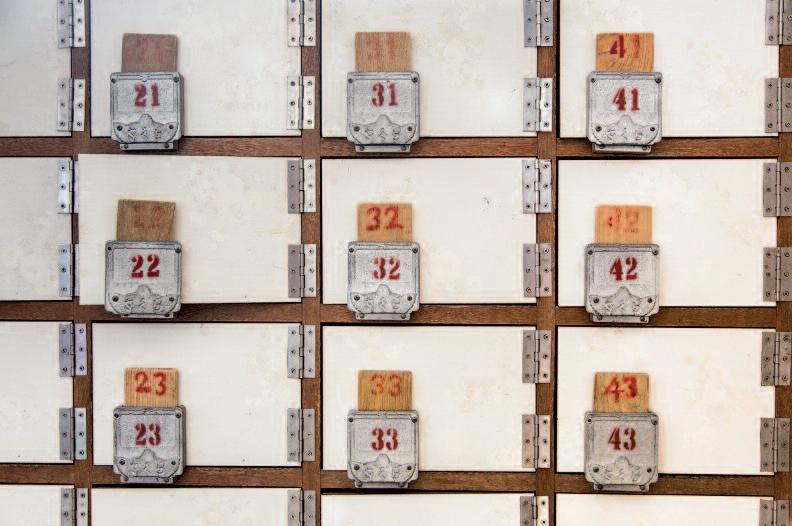

The Matsuyanagi family have been managing this establishment in Yotsuya for the past 45 years It is growing in popularity again
The first time I took a bath here I was told off b y s o m e o f t h e c u s t o m e r s “ T a k e i t e a s y , you ’ re using too much cold water!" they said A small, wrinkled old lady was frowning at me Apparently She is a regular at Wakaba-yu (the hot waters o f W a k a b a ) a n d a l w a y s m a i n t a i n s h e r b a t h a t 4 5 degrees Situated at the bottom of a steep slope lined with temples, this sento and its mosaic of knights hasn’t changed a bit over the past 45 years Neither have the customs It’s late in the afternoon and a host of people in their seventies are having a scrub. The rules are strict and you need to wash before getting in the bath. They scrub themselves with an 80 x 30 cm towel, once, twice, maybe three times, take a bath,
and wash their hair, scrub their feet, apply masks and then dive back into the scalding hot water
The Japanese and their love for bathing isn’t new: to wash is to get rid of the day’s worries and the first t
when he gets back from work is to run him a bath.
H
apartments there is often just a shower, but there is still the neighborhood sento which people can go to luxuriate in
“Back in the day, beautiful young women who worked at Ginza in bars lived here They used to come t
from show business, but they were rich, they didn’t come here!” tells proprietress Matsuyanagi Taeko as she sits in a tall chair her at her cash desk by the e n t
entrance for men, on the right is the one for women. First you need to take your shoes off and put them
in a locker that closes with a wooden key. Then pay 450 yen [£ 2 80] “In the year 22 of the Showa era (1947), the sento cost 1 yen!” remembers her husband Ichiro The price of Tokyo’s sento are set by the office at the town hall that also deals with disputes. However friendly the place is, disagreements do happen from time to time “It’s usually related to the water ’ s temperature, ” says Taeko “Some like it a little cooler, others like it burning hot It sometimes provokes tension!” Apparently they had to c a
and a Japanese The Korean had poured too much cold water in the bath “Koreans only like lukewarm b
morning to heat the water.
Situated behind the building, the boiler room has something unreal about it, with its old bed, shelves full of paper and cardboard, a microwave and even
a flatscreen TV. At the back of the room, a staircase leads directly to the Matsuyanagi’s home and opposite this are two doors leading to the baths themselves The bath space needs washing, disinfecting, scrubbing and filling every day with water from the well The waters are known for their benefits against arthritis, tension and muscle pains Open from 3pm to midnight, Wakabu-yu closes only one day per month “We’re getting old, and none of our three sons will take over. And the town hall might decide to close the establishment in a few years to widen the street, ” says Ichiro, while looking through the spy hole As weird as this may seem, all the sento ’ s backrooms have one “It’s to watch in case someone faints or starts a fight,” says the old man Wakaba-yu is quite tolerant and accepts people with tattoos as long as they don’t cause any problems. In Japan, anti-organised crime initiatives aim to condemn both the yakuza and their signature tattoos by excluding tattooed people from public places but you can ’ t judge a book by its cover, so at Wakaba-yu, all men are naked and equal. Miwako and her grandmother have a laugh while bathing, with their towels placed on their heads They often come together despite having their own baths at home. Going to the sento is a family gathering, a special moment during which they can talk peacefully. Miwako lives in a traditional wooden house in Yotsuya with her family “The district used to be lined with beautiful traditional houses, but many have disappeared,” she says. It is situated at the bottom of Yotsuya near the sanctuary dedicated to Oiwa, one of Japan’s most famous ghost women, and the district has recently been invaded by cranes and construction sites The number of sento in the Japanese capital has gone down from 3,500 to 700 since 1973. This drastic drop in the space of 40 years hasn’t spared
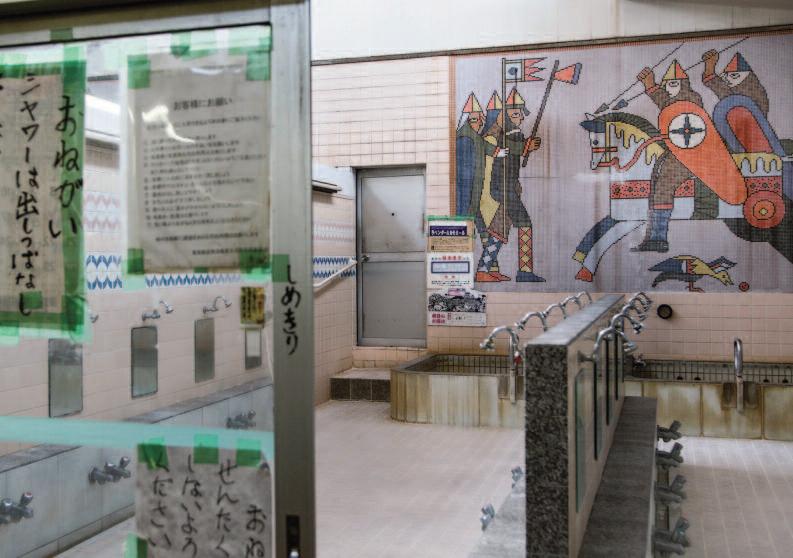
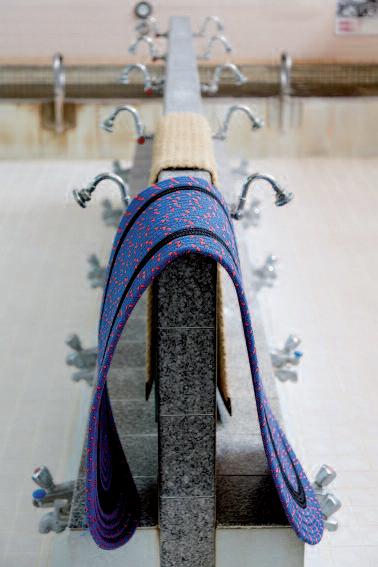
Yotsuya where only three establishments have survived out of the fourteen there used to be Nevertheless, young women have started going to the sento as well A production company that has recently moved into the area has also started bringing in a new clientele Two women walk in shyly and hide their private parts with their towels They don’t look used to sento, which are smaller and more intimate than onsen, the hot springs that many tourists visit “Oh! This is far too hot!” says one of them, taking her foot out of the bath The older women turn to them, some of them with a smile, others with a disdainful glare When bathing, you can either speak or say nothing but the main principle is to respect each other When it is crowded, you need to be careful to not splash the person behind you, to rinse the basin and the stool properly and not to leave hair and water in the changing room
Over the past three years, I have progressively become accustomed to these implicit rules The 45 degree water
has often cured me at times when I was about to develop a cold What I like above all is to completely relax my muscles and to stay still for ten minutes after the bath
A little fan blows warm air around in the changing rooms while a television hanging on the wall broadcasts the weather forecast before the 7 o ’clock news. The place is old-fashioned, with its yellow walls and old wicker stools giving it a nostalgic sixties atmosphere
A regular gets out of the bath She’s over 80 years old but still has beautiful smooth skin and stands up straight. She puts her soap and shampoo basket down and wipes herself off with her small wet cloth By the time she walks up to her locker, she is completely dried off and not one drop of water is left on the ground I still don’t understand why the old ladies don’t bring a second towel to dry off. I think to myself that its part of the art of bathing in a sento and vow that I will master it one day as well
ALISSA DESCOTES-TOYOSAKI
Romae, might have something to do with sento progressively attrac-
makes it easier for them to get
require becoming acquainted with and respecting certain rules Since T o
, public bath managers have started to expect a rise in the number of foreign bathers So the local sento a s s o c i a t i o n h a s p u b l i s h e d a l i t t l e brochure translated into four lang u a g e s ( J a p a n e s e , E n g l i s h , C h in e s e a n d K o r e a n ) t h a t l i s t s t h e basic rules to follow so as not to be told off or upset the other bathers It is free and 20,000 copies have been printed and distributed to the capital’s tourism offices An a c c o m p a n y i n g p o s t e r h a s a l s o been put up all over the city O. N.

If you feel like wallowing in one of the capital’s 700 thermal baths, here are three top places to visit.
O1923, there were more than 2,000 sento
i n T o k y o
4 0 0 were still standing following the biggest earthquake to ever hit the city Most of the 700 establishments remaining today are concentrated in the shitamachi or working-class districts in the east side of the city Zoom Japan has visited three of the most beautiful, representing old and new approaches to this centuries-old tradition
Takara-yu (meaning "treasured water"), as the name suggests, is a real jewel of a place Hidden in one of the backstreets of Kita-Senju, its exterior has remained unchanged since 1937 when it was first built
b
regularly rebuilt to replace the worn out materials
same artist who carved the famous three monkeys at Nikko’s Toshogu shrine The carving is topped by a crane - a good luck charm - and a pine tree, or " matsu " in Japanese, which stands for the owner ’ s name, Matsumoto Another typical sento-related symbol (from the Edo period) is the bow and arrow dangling off to the left They are said to attract customers as their combined Japanese name, yumiya, is a pun on the expression “ yu ni iru” which means “
yu ’ s jewels is a gorgeous Japanese garden with a pond whose resident koi carp are 50 years old Shimizu-yu, in the southern Shinagawa Ward, is a
1924, according to third generation owner Kawagoe Taro, his father decided to dig for a hot spring in order to revive their declining fortunes. They struck “
Tokyo) in 1994 and in 2007 they found something even better: a “golden water ” that is famous for its c
from 200 metres underground but in order to find the golden water they had to drill all the way down to 1500 metres. The curative effect of the iron-rich w
enhanced by a process called nano-bubbles
S h
not one, but two different kinds of hot spring water that people can enjoy at a sento ’ s traditionally low prices It is so popular that on the morning we visited there was a long queue of people waiting outside to be the first into their small outdoor bathtub. W
one of the city’s most famous public baths. Establis h e
sento areas), it was built, like Takara-yu, in the characteristic temple style with high ceilings that can only be found in Tokyo Its main feature is the hafu, a curved wooden shape hanging over the entrance.

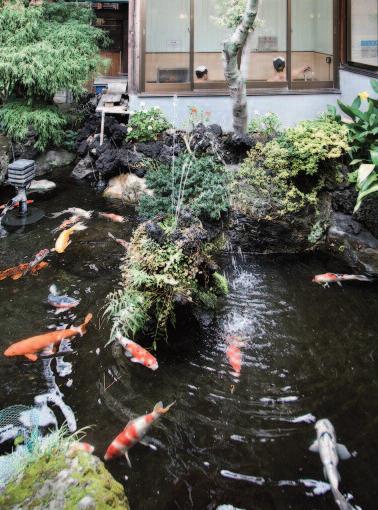
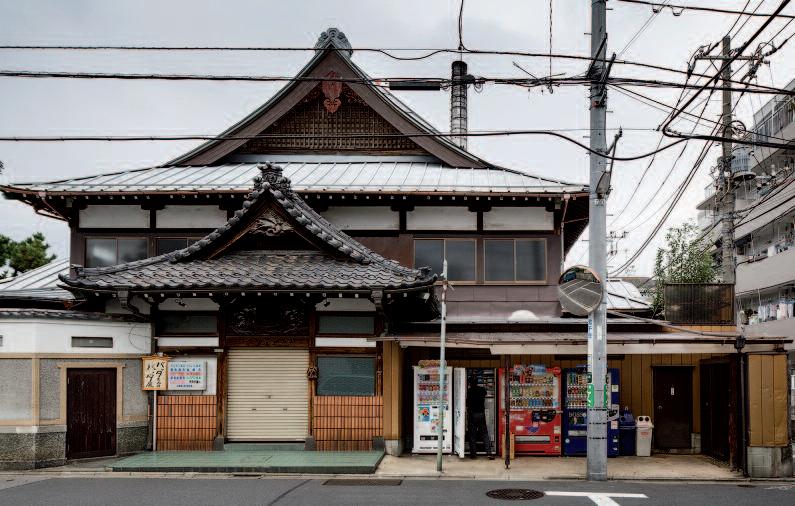

According to sento expert Machida Shinobu, traditionally this design can be found in four very different places: a shrine, a sento, on top of a hearse and at the entrance to a red light district In all these cases it symbolizes – in one way or another – an entrance to paradise. Originally, public baths were much simpler affairs and it was only after the Great Kanto Earthquake (1923) that carpenters specializing in temple and shrine construction were asked to rebuild the damaged sento That style became very popular, but only in Tokyo. Traces of Buddhist temple architecture can even be found in the dressing rooms, with high ceilings and a unique ‘ s ’ shaped structure at the juncture between the
roof and wall
Decoration gives way to functionality inside the bathroom area The water coming from underground (in Myojin’s case from their private well) is pressurized through a complex piping system, thanks to which it flows at a specific angle Even the floor in the shower area is slanted at a certain angle to avoid pools of water, which would cause mold This is of the utmost importance as otherwise the constant humidity and steam would cause serious damage. Indeed, it is almost a miracle that traditional public baths last for so long without extensive repairs.
GIANNI SIMONE
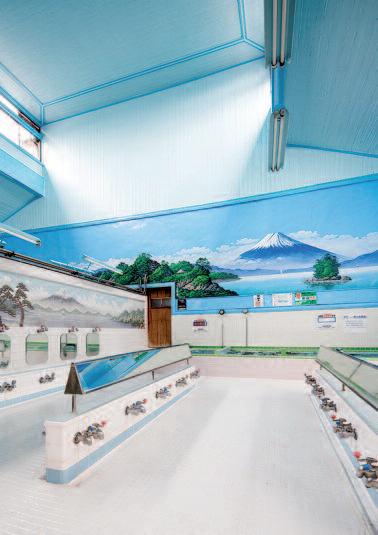
Takara-yu: 27-1 Senju-Motomachi, Adachi-ku. Tel: 03-3881-2660. Nearest station: Kita-Senju (Tokyo Metro Hibiya and Chiyoda Lines) Hours: 15:00 – 23:30 Closed on Friday 450 yen
Shimizu-yu: 3-9-1 Koyama, Shinagawa-ku Tel: 033781-0575 Nearest station: Musashi-Koyama (Tokyo Meguro Line). Hours: 12:00 – 24:00 (weekday), 8:00 – 24:00 (Sunday). Closed on Monday Fee: 450 yen
Myojin-yu: 5-14-7 Minami-Yukigaya, Ota-ku Tel: 033729-2526 Nearest station: Yukigaya-Ootsuka (Tokyu Ikegami Line) Hours: 16:00 – 23:30 Closed on the 5th, 15th and 25th of each month Fee: 450 yen
Machida Shinobu has made a study of sento for the past 30 years. He knows all the secrets of public baths.
Taking a bath may be a very common and everyday experience, but one only needs to peer behind the curtain of a sento to discover a unique world full of fascinating people and stories In order to hear some of them, Zoom Japan paid a visit to Machida Shinobu, arguably the foremost expert on Japanese public baths
Machida has studied the subject for the last 33 years and in the process has visited 3,200 sento around Japan “The Japanese are particularly fond of bathing,” Machida says. “For us it’s not only a matter of washing our body; it’s a way to cleanse our spirit That’s why we enter the bathtub only after cleaning our body”.
Machida became interested in sento art and architecture after being asked by an Australian friend why the entrance to one near his house looked like a shrine. “Like most regular customers I had never noticed that particular feature,” he says, “ so I began to research the subject, as I also wanted to record a part of Japanese culture that was at risk of disappearing without trace ” This is actually a real danger as Tokyo's sento are closing down at a rate of one every two weeks, while the national average is one a day. “They peaked at 2,600 in 1968, but currently there are only 700 left, concentrated in the traditional working-class districts,”
Machida says “Nation-wide they are down to 4,000 from 18,000 in 1968”
Machida not only gathers information about sento, he also likes to get his hands dirty and once in a while paints the murals that adorn the main bathrooms of these establishments “After helping the artists for 30 years I have begun to paint them myself,” he says These giant artworks, called penki-e in Japanese, take up the whole background wall right above the main
bathtub where the customers soak after scrubbing their body clean. According to Machida, the first one appeared in 1912 “The owner of Kikai-yu, a public bath in the Kanda-Sarugakucho district in central Tokyo, wanted to please the children who frequented his sento So he asked artist Kawagoe Koshiro to brighten up the interior with a painting,” Machida explains.
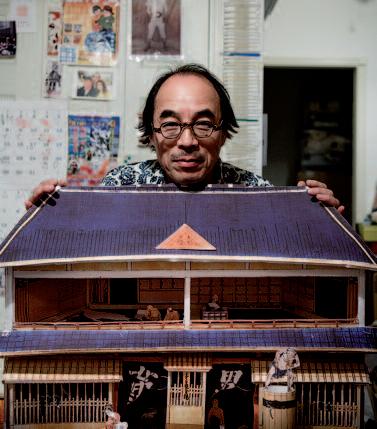
As Kawagoe was from Shizuoka prefecture, he painted Mount Fuji, which even today is by far the most common image you will find in a sento “You see, Mount Fuji is a sacred mountain which brings good luck,” Machida offers “Also, as the mural always stands directly over the bathtub, it gives the impression that Mount Fuji’s melted snow runs down directly into the tub For the same reason, other popular subjects are streams and waterfalls”
This kind of interior decoration is a typical Tokyo feature and is rarely found in other regions Penki-e artists only use common house paint in four basic colors (white, red, yellow and blue) that they mix to obtain





all possible combinations As most public baths are closed only once a week, a mural must be completed in just one day “Usually it takes about 2-3 hours for the artist to paint the new work directly on top of the old image,” Machida says, “but the whole process takes about 6-7 hours from start to finish The most important thing is to get used to the wall’s size before starting to paint Once you get started, there’s no time to go back and start all over again”
Nowadays penki-e can only be found in older sento built before the mid-70s, but they are gradually disappearing, together with the sento themselves, due to a lack of customers “This is hard work, and doesn’t pay well, so nobody wants to do it anymore, ” Machida says. “During the golden era, in the ‘50s and ‘60s, there were many such artists Unfortunately only two are left now, both of them in Tokyo. One is 68, the other one is over 70, and they have no apprentices, so this traditional art will die with them”
The world of sento is full of puns, most of which have something to do with bathing and luck “There’s a place in Osaka which features a couple of Statues of Liberty,” Machida says, “because the word “nyuyoku”, which means bathing, sounds like New York”
Some subjects are avoided at all costs because they are said to bring bad luck to the sento “The word for monkey, saru, also means ‘ to go away, ’ so these animals are considered taboo because the owners don’t want to lose customers, ” Machida says “For the same reason we never paint a setting sun with autumn leaves, as the verb ochiru (to fall) has negative connotations in Japanese”.
Other subjects that have recently disappeared are such popular pop culture icons as Mickey Mouse, Doraemon and Ultraman “In the past, sento owners tried to attract more customers by painting popular characters, but they had to cover them up for copyright reasons ” G. S.


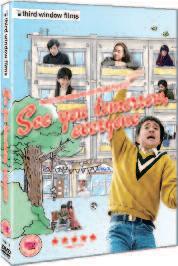


Hatakeyama Naoya is a photographer. He is also a son, who on the 11th of March 2011 had received no news about his family living in Rikuzentakata on the northeast coast of the archipelago, that was swept away by the tsunami like so many other cities. Like many others he understood that something terrible had happened, without being able to determine the extent of the damage. He decided to go and see for himself and to try to find his mother and sister. Hatakeyama is also deeply attached to this region and city, and the pictu illustrate his journey to Rikuzentakata speak for themselves. They show nature at peace, children, women and men taking part in matsuri (traditional celebrations), walking

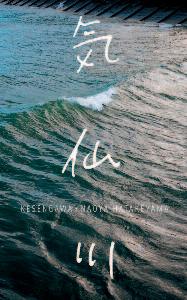
peacefully through the streets and looking at the surrounding countryside. Hatakeyama wanted to believe that his family had escaped h deadly wave and although he had dea what to expect at the end of ourney, he was sure it would be pletely different to how he embered it. On the way, he found that his mother and sister were he list of survivors He also overed great support and people y to help him reach his goal; port that went far beyond just erial help. Hatakeyama Naoya was a friend’s friend when he finds that his mother has died. “As we t to walk through the snow I hear ind me. I turn and see tears rolling down her careworn cheeks. Chiba walks behind me, almost falling over at every step. She never met my mother. But mother (her image) filled her head until a moment
It’s impossible to speak of “K-On! the film” without referring to the better known manga that it was based on. The film was directed by Kyoto Animation, who were also responsible for the K-on! animated series. Although a story in its own right, the film feels very much like a long episode from that series and scrupulously follows the world as it appears in the series, perhaps even a little too closely For example, our heroines’ adventures once they reach their
final destination of London are only given 45 minutes screen time out of the whole hour and 50 minutes run-time. This feels insufficient, especially as the rest

of the film is rather well paced and edited The other main scenario, focusing on the song to be learned before the gang can
ago. To have to stop this must have been sad for her,” he writes. Hatakeyama Naoya is able to capture and communicate the Japanese soul, the infinite sadness that brutally hit a whole population and destroyed lives “Nothing is more moving than these unexpected and quiet gestures,” he adds. The reader also cannot help but be moved; we all become Hatakeyama Naoya. We all make the journey to Rikuzentakata, to the house on the bank of the river Kesen where his mother used to live… And then, faced with the horror of the tragedy we are unable to speak, we are lost for words. First and foremost Hatakeyama Naoya is a photographer, so he shows us his heartfelt emotion through pictures Much of what we see is bleak but in the background stands a lone pine tree, the only survivor from 70,000 trees and a clear sign of hope not lost.
Kesengawa by Hatakeyama Naoya, Light Motiv editions, £56 - www photobookstore co uk
leave Azusa High School, sometimes gets a little boring but it is hard to deny that the slow pace is a core part of the KOn! DNA and from this point of view, the film is very much a success. There is a clear lack of balance in the screen time given to each character, especially to Mio, and this seems a shame. It is, nevertheless, always enjoyable to watch. When this film was launched in Japan it received extensive media coverage and was very successful. Fans were
not disappointed with the result, which faithfully brought their favourite manga series to life The scriptwriters and director Yamada Naoko could perhaps have used a little more imagination though, and the film lacks that touch of eccentricity that one might expect from a work of this length, something that could have converted those new to the series to become fans. K-on! The movie, directed by Yamada Naoko, Manga Entertainment £15 57 (Blu-Ray), £13.18 (DVD)

In her latest book, Eri Hotta examines what led Japan to join a war it knew in advance was lost.
Historian John Dower recalls: “Pearl Harbour remains the greatest symbol of victimization for the US When Al-Qaida launched their attack against the World Trade Centre on September the 11th 2001, the Americans immediately compared it to Pearl Harbour, not only because it was a surprise, but also because it was carried out against an innocent nation for no reason at all” Sixty-one years after the 7th of December 1941 and, despite the fact that Japan is undoubtedly one of the most loyal allies of the US, after the attacks on New York and Washington one of the first things to be recalled was Japan's "treachery" at Pearl Harbour Comparisons were even made between the kamikaze squadrons during the War and the terrorists who flew into the Twin Towers and the Pentagon In short, the abomination that the United States was a victim of on that wintery day in 1941 remains alive in the sense that the country still consideres itself an innocent victim. In Japan 1941, Countdown to Infamy, Eri Hotta’s interest is in what led the Japanese to take part in a war that many considered to be madness To underline the extreme complexity of the situation in Japan at that time, she writes, “throughout the course of the government ' s final discussions about going to war, Tojo was acutely aware of the small possibility of Japanese victory” A few years after the conflict, philosopher Masao Murayama wrote: “trembling at the possibility of failure, [the leaders] still thrust their way forward with their hands over their eyes. If we ask, “did they want war?” the answer is yes; and if we ask, “Did they want to avoid war?” the answer is still yes Though wanting war, they tried to avoid it, though wanting to avoid it, they deliberately chose the path that led to it” To understand this state of mind, the author of the outstanding work: Pan-Asianism and Japan’s War,

1931-45 (2007) offers a detailed analysis of the various political and philosophical currents that were streaming through Japan in the months prior to the attack against Pearl Harbour. This book’s originality stems from how it explores the cultural context in which those who chose to lead their country on the road to war found themselves She tells of how when the reports of the attack's success came in on the 8th of December 1941, the Japanese people greeted it as a great liberation. “There was very little of the famous Japanese reserve to be seen. Strangers congratulated each other on the street. Travelling on an overcrowded train that evening, the diarist Nagai Kafu observed ‘ a fellow exclaiming excitedly,’ apparently unable to contain how thrilled he was about the day's news ” Intellectuals celebrated as well One of the most distinguished poets of twentieth-century Japan, Saito Mokichi, fifty-nine at the time, recorded in his diary that: ‘The red blood of my old age is now bursting
JAPAN 1941, COUNTDOWN TO INFAMY, by Eri Hotta, Knopf Publishing Group, 2013, £17 25

with life! … Hawaii has been attacked!’”. When reading Eri Hotta’s book you develop an understanding of what provoked such joy when the probability of winning the final victory was still very slight. She reveals the leaders’ trail of thought: that war was the only possible way out, never seeking to excuse or defend their position but expertly analysing it She shows that the caricatured portraits of certain Japanese leaders that still prevail in the story as told in American history textbooks have nothing to do with reality Prime minister Tojo should not perhaps be considered the bloodthirsty dictator as described in American propaganda or Tintin’s adventures in Japan The author portrays the main protagonists with a much more objective and realistic approach leaving aside the events that took place during the course of the war. She places them in their own epoch, and that successfully throws a new light on the way we can view the war Eri Hotta has produced a very useful book It marks a turning point in the way we perceive the war in the Pacific and Japan’s responsibility in how it started.
GABRIEL BERNARD




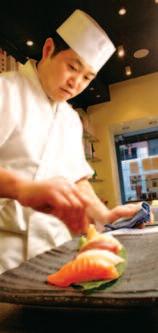

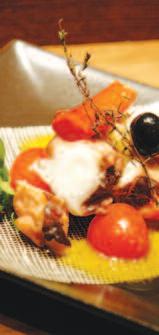
Hosoda Mamoru is a virtuoso This is no exaggeration given the new dimension he has introduced to animation He was recognised for The Girl Who Leapt Through Time (2006) and acclaimed for Summer Wars (2009) and has now found further renown with his latest work: Wolf Children This craftsman has never stopped getting better, with original scripts that make you reflect on the world we live in. His latest opus perfectly illustrates this talent and sensitivity Released on the 21st of July 2012 in Japan, the film attracted over 2 5 million viewers in the space of only four. The novel adapted from Hosoda Mamoru’s script also did extremely well and was at the top of the bestseller list for a number of weeks. The viewers who fell in love with the film ran to bookshops to relive the adventures of this somewhat unusual family, with whom we all have a lot in common. As the director himself says, it is up to the viewers to appropriate his work and to find elements that remind them of their own story That is where Hosoda’s strength lies He was able to build a work of art in which everyone recognizes themselves. Childhood, motherly love, moments of happiness and harder times are all themes which run through the film and help us reflect on what makes a family in our world Hosoda had already tackled a similar subject in Summer Wars by showing that a well-knit family could triumph against adversity In Wolf Children, Hosoda doesn’t start out with a ready-made family, but instead builds it up from disparate individuals over the space of two
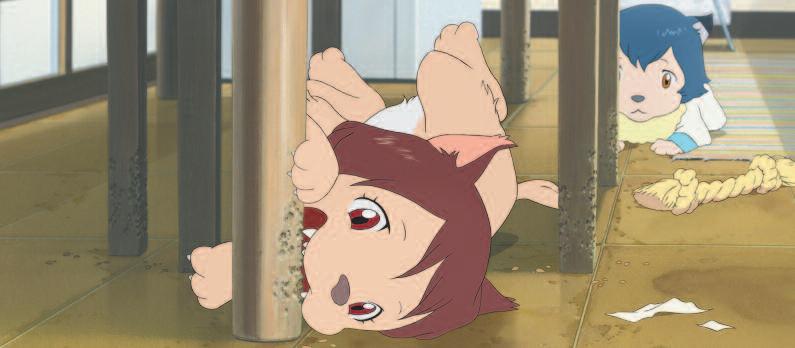
and a half hours We can ’ t help but be amazed at this cinematic performance and it is very rare for anyone to have achieved this so simply and effectively Hosoda Mamoru chose to start with the meeting between two beings with very little in common. Hana is a shy student who falls in love with a wild youth who also happens to be a wolf man. By depicting this unusual relationship, the director reminds us of our right to be different and that love is always capable of shaking up preconceptions They have a daughter, Yuki and a son, Ame before the father disappears in brutal circumstances and Hana is left alone to bring up both of her children. After these events Hana's personality changes as she vows to do the best for her children and provide them with the environment they need to grow and prosper Hana’s determination is exemplary She learns to be a single mother by relying only on her own will and love for Yuki and Ame All of this is presented with impressive simplicity and style
We are completely taken in by Hosoda With amazing power, he succeeds in sucking us into his world without using over-the-top graphics or spectacular effects. Hosoda is a definitive craftsman, a goldsmith whose precision
and attention to detail result in an absolute masterpiece
The care he takes with the drawing, to the point that one sometimes wonders if it is not actually photography, the settings and the impeccable editing all give a amazing depth to this story of a family that moves to the countryside to make its way It is a life lesson that nevertheless does not fall into pathos but gets us thinking. Despite the seriousness of the subject, the director also never forgets humour You can ’ t stop yourself laughing when you see Hana hesitate between a pharmacy and a veterinary clinic to have her sick child cured and it is always fun to see Yuki turn into a wolf every time she gets upset Hana’s perseverance and her refusal to shy away from whatever sacrifice is necessary for her children to be happy are very moving She even accepts that her son abandons the world of men to return to nature Because he is a fantastic director – both a great storyteller and a brilliant technician – Hosoda Mamoru delivers a film that will without doubt become a reference point in the history of cinema Millions of Japanese fans cannot be wrong and now it is time for British audiences to be wowed by this warm, charming and masterfully told tale


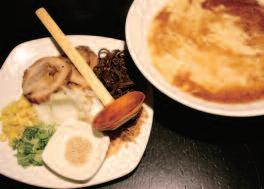


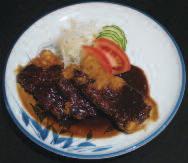

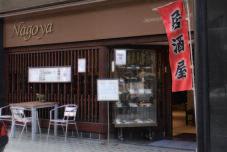


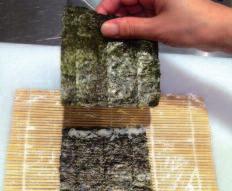
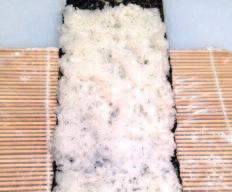
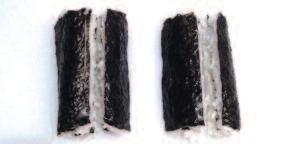
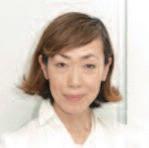


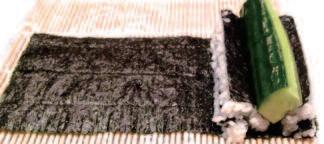


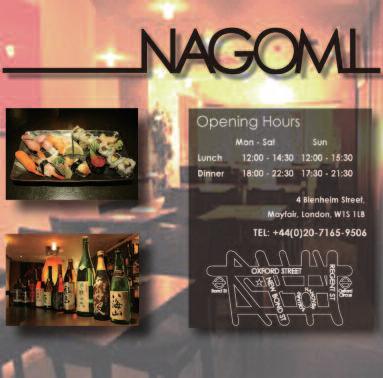











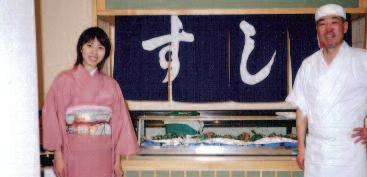






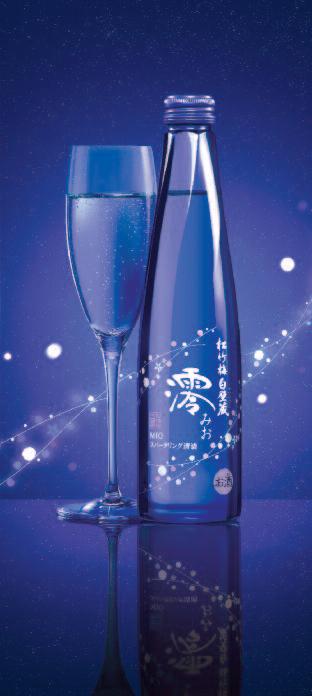
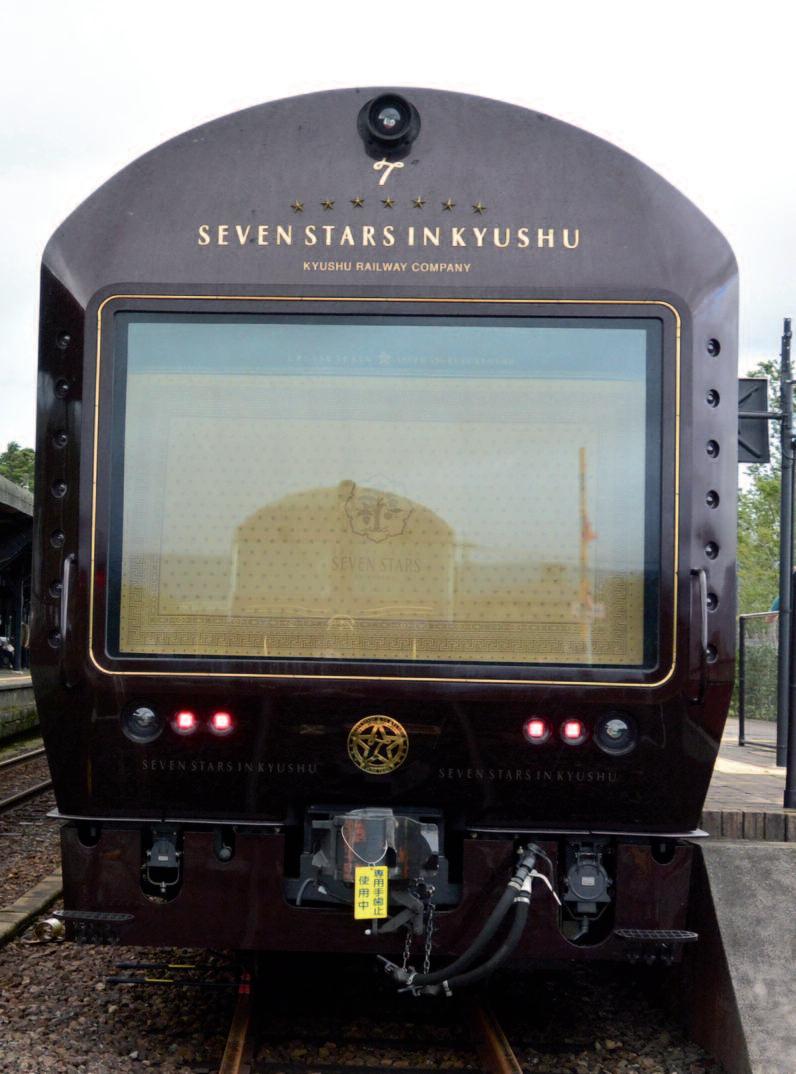

Japan has had a new train since the 15th of October and it is a unique way of discovering regions that were little known up until now.
In 2012, Japan welcomed eight million foreign tourists The number is growing but it is still far from the current government ’ s hope for twenty million by 2020, the year during which Tokyo will
work to link the capital to Nagoya with a 500-km/h train will have progressed quite a bit Nevertheless, as 80% of the track will be underground, those who dream of catching this technological wonder will be
most beautiful landscapes on offer in the land of the rising sun However, the new line will give speedy
the strongest assets for Japan's tourist industry. Until then, foreign tourists can experience a train journey
speeds though. On the contrary, it is based on the
and appreciating the pleasure of the journey itself. This train is called Nanatsuboshi in Kyushu (Seven Stars in Kyushu) and its promoters wish to introduce
that the pleasure of travelling for its own sake and appreciating every moment has been lost somewhere i n
n Kyushu is a “cruise-train” In other words, this new train invites us to explore beautiful landscapes and an exceptional setting, just as one would on a fine ocean cruise.
Built by designer Motooka Eiji, this classy machine is a work of art on rails, its mission is to transport
Luxury suite A is at the end of the train and benefits from a large bay window from which travellers can fully appreciate the beautiful landscape


passengers into an elegant world of luxury and delight. The design certainly includes a lot of wood, whether in the suites, in the restaurant or the saloon cars The concept is for the traveller leave everyday life behind and there are two options available for those who want to sample an exquisite getaway on rails. One can either embark for a weekend or book a sojourn for a longer period Of course, the prices are as indulgent as the train: from 155,000 yen [£984] to 566,000 yen [£3,593] depending on the itinerary and the cabin, although the rarity justifies the price There are only 14 suites, including two labelled as “luxury suites” that are furnished tastefully and include bathrooms that are comparable to some in the best hotels The exceptionally comfortable rooms offer a place from which to watch the scenery passing by The lucky person staying in the Luxury Suite A even has a bay window to enjoy when the carriage is at the back of the train The saloon car also boasts a wonderful window from which to enjoy the view. This carriage has an important role on the Nanatsuboshi in Kyushu Like the saloons on transatlantic ships that provide a place to meet people and make connections during a long crossing, the saloon car aims to revive this experience and facilitate communication between the passengers. Meeting people in a warm and inviting atmosphere has never been easier and everything is thought out so as to encourage the passengers to forget about time Food is always a good way of starting a conversation and the food on offer on this luxury train is simply wonderful. A large variety of local products are used to serve dishes that are as good as they look Whether served onboard the train or at a traditional hostel (ryokan) that is one of the stops during the 4 day trip, meals are a time during which the satisfied passengers meet and talk while the train staff take good care of them Every aspect of the journey is kept under control and the almost perfect level of service offered has no equal, anywhere in the world This focus on comfort is one of the greatest assets for this new railway project and JR Kyushu has high hopes that it will seduce a new kind of tourist and bring them flocking in significant numbers The concept seems to be a success as the train is already fully booked until June 2014 “We received nine requests for each cabin We

were forced to draw lots to allocate them,” says one of the company ’ s managers Nanatsuboshi in Kyushu is also contributing to the popularity of this barely known island. Nanatsuboshi stands for high quality service, but the seven stars also designate the seven prefectures that make up Kyushu: Kagoshima, Kumamoto, Miyazaki, Saga, Oita, Nagasaki and Fukuoka The train travels through
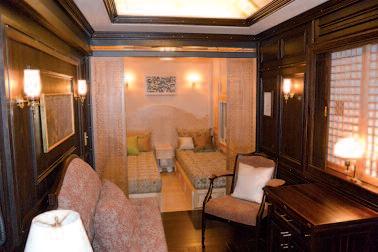


all of them and gives passengers the opportunity to enjoy the riches of the landscape throughout their voyage The view of the Ariake Sea between Hizen Hama and Hizen Oura is breathtaking and the section when the train is travelling towards Miyazaki early in the morning and guests can look out over the Hyuga sea is particularly enchanting
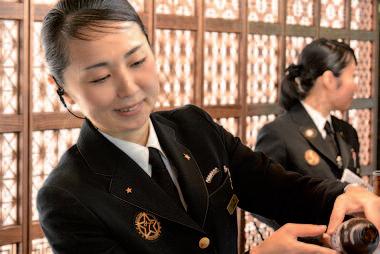























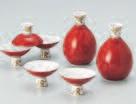












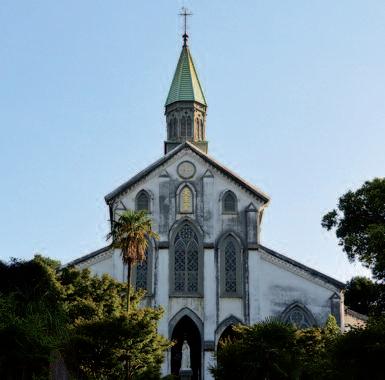
Like all good sea cruises, the train also makes stops to allow the travellers to discover various cities or sites along the way. Those who choose the weekend option can spend an afternoon in some of the most beautiful places in Nagasaki Walking through Glover Park, which overlooks the port city, is a wonderful experience and takes you past a few beautiful colonial houses that are reminders of the part the city played in the modernization of the country Close by is Oura Church (Oura tenshudo) that was built in 1864 under the supervision of Father Petitjean, the city’s first bishop. The pride of Nagasaki, it could easily be designated a Unesco world
FUKUOKA Hakata Station where you catch the Nanatsuboshi in Kyushu is a fifteen-minute metro ride from Fukuoka airport KLM has been offering three flights a week to Fukuoka from Paris since spring 2013.
NANATSUBOSHI IN KYUSHU This new train is already very popular with the Japanese but its promoters are keen to attract foreign tourists so two of the suites are reserved exclusively for overseas bookings. To make a reservation, go to www.cruisetrain-sevenstars.jp/en/index.html.

2 days – 1 night itinerar

















































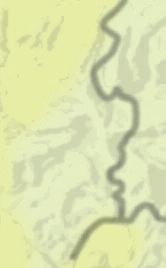






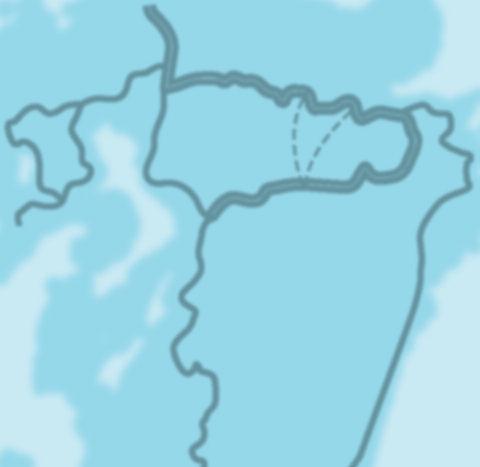




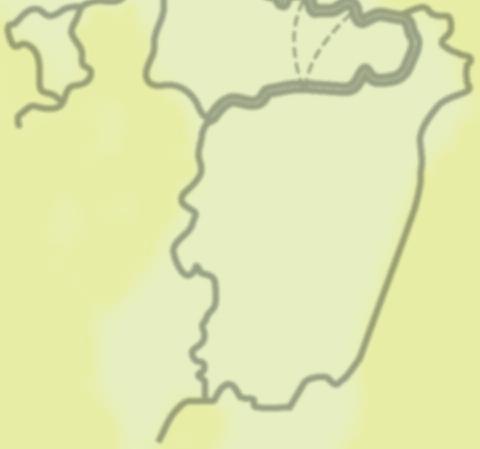





heritage site Early risers are given the opportunity to walk up Mount Aso, an active volcano whose main characteristic is a 120 km circumference caldera, the largest in the world In Yufuin, a charming spa town, travellers are encouraged to take a walk and experience the many hot footbaths (ashiyu) scattered across the town. JR Kyushu has a bus waiting at every stop, furnished to capture the same atmosphere as the train itself and ready to take the travellers to places of special interest With the three-night option, one night is spent away from the train Thirty kilometres away from Kagoshima, JR Kyushu has gone into a partnership with some exceptional hostels to offer its spoilt travellers





unforgettable memories One of them, the Ishiharaso, is situated by a river and offers an outside bath (rotenburo) hidden away in this natural setting It is quite common to see a heron flying by and landing just a few metres away, an example of a magical moment among many Let yourself be transported by the magic of the railway that will leave you with a plethora of enchanting memories Such a journey will always feel too short, but you will soon be able to book these kind of trips elsewhere and other railway companies across the archipelago are convinced it is a recipe for success More magic is yet to come.
ODAIRA NAMIHEI

ISSN : 2050-5108 Printed in France - In cooperation with Zoom Japon (France) - Ed lyfunet
Publisher : Yoshik Van
Editorial : Odaira Namihei, Gabriel Bernard, Alissa Decotes-Toyosaki, Gianni Simone, Eric Rechsteiner, Jérémie Souteyrat, Jay Brillo, Luke Bissett, Aurélie Boissière, Steve John Powell, Angeles Marin, Kanda Graphisme
Translation : Chloë Salles, Susana Brown, Gavin J Poffley
Sales : Keiko Tash ro, Monica Fujiwara
Production : Toru Uekusa, Misako Kondo, Yuki Torikai, Toyohiko Endo, Takatoshi Ono, Kyoko Saito




